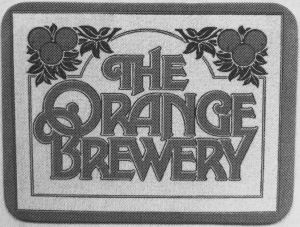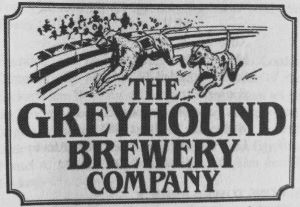Brewpubs closed or no longer brewing
The Orange 37 Pimlico Road SW1W 8NE (Westminster)
First sold beer: February 1983
Ceased brewing: February 2001
The Yorkshire Grey 26 Theobalds Road WC1X 8PN (Camden)
First sold beer: October 1984
Ceased brewing: mid-2001
The Greyhound 151 Greyhound Lane SW16 5NJ (Lambeth)
First sold beer: August 1984
Ceased brewing: 1997
Jolly Fenman 64 Blackfen Road, Sidcup DA15 8SW (Bexley)
First sold beer: September 1984
Ceased brewing: 1988
Kingston Brewing Co (Flamingo and Firkin, Flamingo Brewery) 88 London Road, Kingston KT2 6PX (Kingston upon Thames)
First sold beer: September 1987 (as Flamingo and Firkin)
Ceased brewing: January 1998 (as Kingston Brewing Co)
Duke of Norfolk 202 Westbourne Grove W11 2RH (Kensington & Chelsea)
First sold beer: Late 1990
Ceased brewing: Early 1993
The success of brewpubs like the Firkins in the early 1980s prompted some of the big brewing groups to copycat action. The Orange, a handsome Grade II-listed Pimlico pub dating from the 1840s, became the first London venue in Watney‘s Clifton Inns brewpub chain in 1983 when its cellar was equipped with a small malt extract brewing kit provided by microbrewing pioneer Peter Austin, also involved in setting up the Firkins. The brewer was Kim Taylor, one of very few professional female brewers at the time, who later became overall head brewer for the whole group.
The Yorkshire Grey, a Grade II-listed landmark pub on the edge of Bloomsbury, became the second London venue in 1984. Like its predecessor, it began with a malt extract brewery.
In 1984, the third London pub to receive the Clifton Inns treatment was the Greyhound, a pretty Streatham pub dating from 1930. In the late 1980s, though still using malt extract, it claimed to be the only brewery in London regularly producing a mild ale, XXX Pedigree (around 3.8%).
A few weeks later, the Jolly Fenman, a roadhouse pub in suburban Blackfen opened by Watney as recently as 1957, also began brewing, using an 8 hl extract kit.
Brewing at the Three Tuns just outside Kingston town centre, ironically given the original inspiration of Clifton Inns, started under the Firkin name. The pub was rebuilt in 1913 by the Isleworth Brewery, which was bought by Watney’s in 1924 and closed in 1952. In 1987 it was leased to Bruce’s Brewery to become the Falcon and Firkin, the seventh London pub in this chain. In common with other Firkin openings of the time, this had a full mash brewhouse.
The following year, Firkin founder David Bruce sold the chain to Midsummer Leisure, but the Flamingo was exempted from the deal under the terms of the lease. Instead it reverted to Watney’s, by now owned by GrandMet, who sensibly incorporated it into the Clifton Inns portfolio as the Flamingo Brewery.
That same year, 1988, saw the first paring back of the chain in London when brewing ceased at the Jolly Fenman, with beer sometimes supplied from some of the other pubs. But in 1990, its brewhouse was transplanted and revived at the Duke of Norfolk in Holland Park, which was moved from Watney’s Chef & Brewer chain to Clifton Inns. Brewing activity here, though, lasted little more than a year.
Recipes at Clifton Inns in Watney days varied slightly from pub to pub, but usually included ordinary (around 3.7%) and best (around 4.6%) bitters and a strong beer, over 5%. Yeast was supplied from the Stag brewery at Mortlake.
Industry restructuring following a regulatory change in 1990 saw many pubs changing hands as the old vertically integrated brewing and pub businesses unravelled. In 1991, Watney’s owner GrandMet sold its brewing interests to Courage in exchange for the latter’s pubs, then began selling off parts of the resulting vast pub portfolio.
The Greyhound, the Orange and the Yorkshire Grey went to Scottish & Newcastle, who initially expanded their brewing activities. During a refurbishment at the Orange in 1995, the malt extract kit was replaced with an 8 hl full mash brewhouse under brewer Peter Smith.
It subsequently produced two cask bitters, SW1 (3.8%) and SW2 (4.8%), Pimlico Porter (4.2%) and a cask lager, Victoria (4.9%), plus various seasonals.
In May 1996, following this example, S&N invested £30,000 in a 5 hl full mash brewhouse at the Yorkshire Grey under brewer John Horne. Its range of cask beers included Barristers Best Bitter (3.8%), a stronger bitter named QC (4.5%) and Lordship Supreme Old Ale (5%).
The upgrade wasn’t extended to the Greyhound, which ceased brewing in 1997, apparently due to lack of demand.
The Orange and the Yorkshire Grey were sold and brewing ceased in 2001 when S&N thinned out its tied estate. The Orange is now an upmarket gastropub with boutique rooms operated by the Cubitt House group. The Yorkshire Grey is part of Stonegate’s Craft Pubs chain.
The Greyhound ended up in independent hands and in 2017 was reopened as a family-friendly pub with an Alice in Wonderland theme known as the Rabbit Hole. The Duke of Norfolk closed in 2002: it was later reopened as a restaurant, 202, but that has also since closed. Greene King now runs the Jolly Fenman as a pub-restaurant.
GrandMet sold the Flamingo in 1995 to Mercury Taverns, who retained brewing for a while under the name Kingston Brewing Co. It was sold again in 1998 and renamed the Kingston Tup, at which point the brewery was removed. After two more name changes, in 2021 it was converted into a hotel and bar known as Kingston 1.
For more on the difference between malt extract and full mash brewing, see Firkin Brewery.
Last updated 7 June 2024.







Leave a Reply